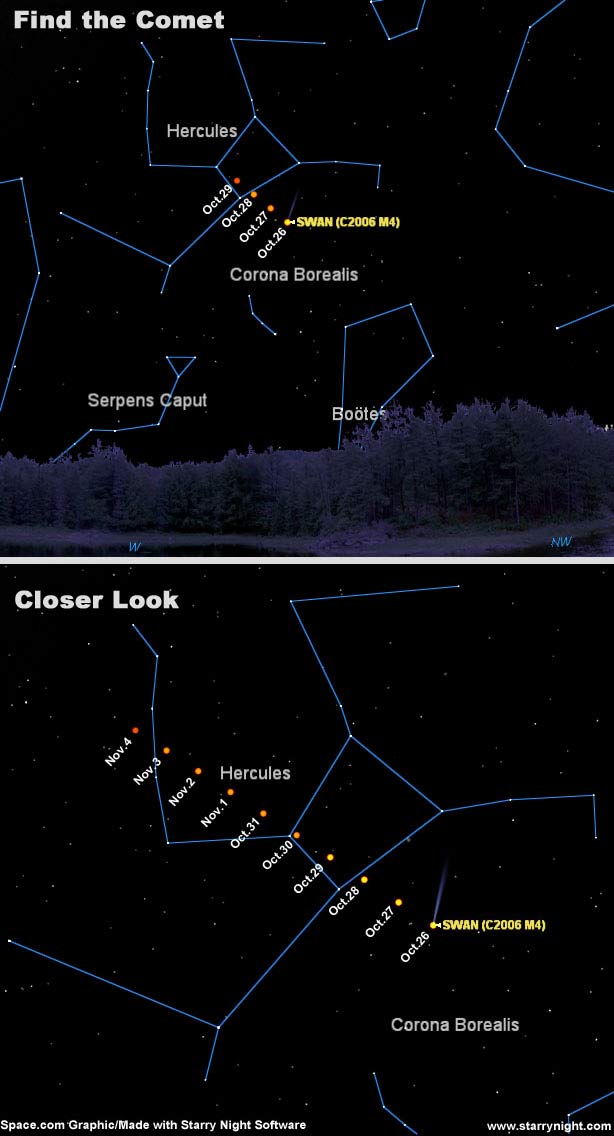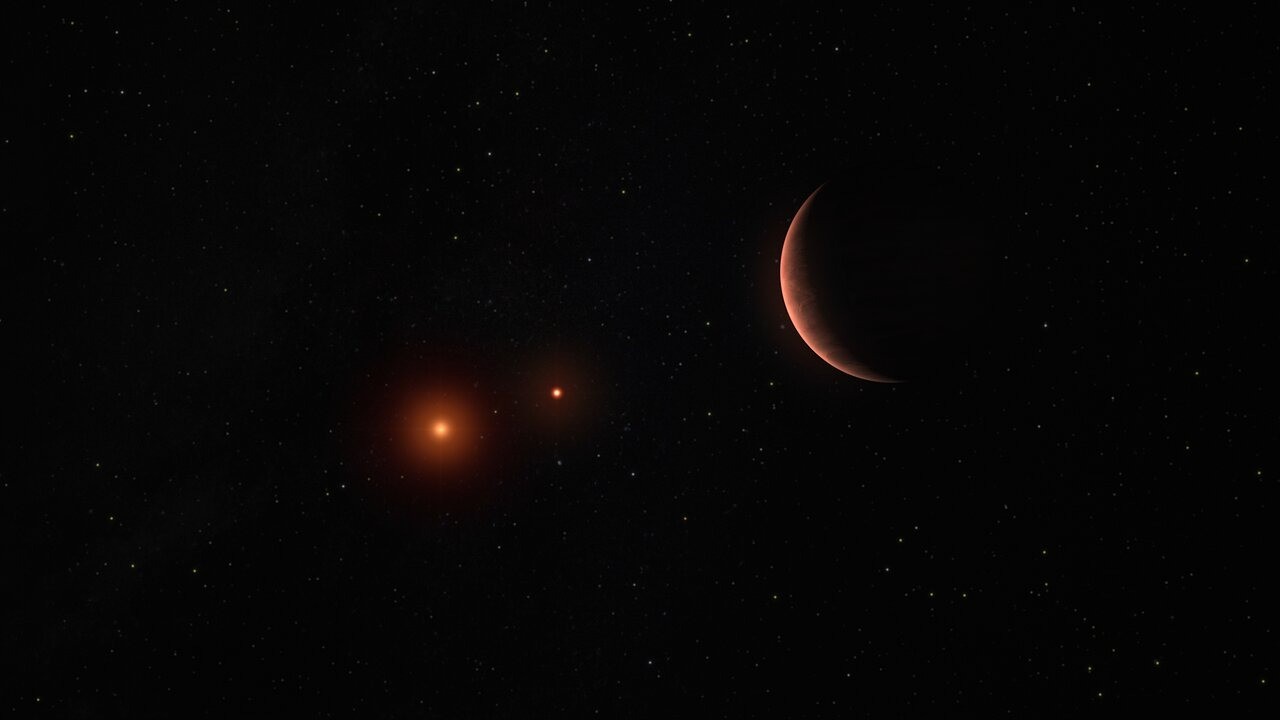Wow! Striking Green Comet Suddenly Visible in Evening Sky

Updated 5 p.m. ET
What had been a modest comet seen only with binoculars or telescopes flared up this week to become visible to the naked eye [images].
Comet SWAN, as it is called, is in the western sky after sunset from the Northern Hemisphere. It remains faint, likely not easy to find under bright city lights but pretty simple to spot from the countryside.
It is a "fairly easy naked-eye comet," said Pete Lawrence, who photographed the comet from the UK. "The tail is now showing some interesting features too."
UPDATE: Late Thursday, however, Lawrence reported that the comet already may be getting dimmer. It is not clear what skywatchers should expect of this comet.
Find it
The comet, also catalogued as C/2006 M4, is about halfway up in the sky in the direction of the constellation Corona Borealis [Sky Map].
Get the Space.com Newsletter
Breaking space news, the latest updates on rocket launches, skywatching events and more!
As with most comets, this one looks like a fuzzy star. It has an interesting green tint, however, indicating it has a lot of the poisonous gas cyanogen and diatomic carbon, astronomers say.
Sam Storch, a long-time sky watcher from Long Island, NY, said the comet appears "quite a bit deeper than any other green I have seen in any sky object, even planetary nebulae."
"Comet SWAN is very easy to find," said Joe Rao, SPACE.com's Skywatching Columnist. "In good binoculars it appears as a bright, symmetrical and surprisingly green blob."
Legendary objects
Comets, the stuff of legend and myth, are frozen leftovers of the solar system's formation. Most orbit the Sun out beyond Neptune, but a few wander through the inner solar system now and then. As a comet gets closer to the Sun, solar radiation boils the frozen gases, along with dust, off the comet's surface. Sunlight reflects off this material, creating a head, or coma. Some comets never get very bright. Others brighten dramatically. Some even come unglued as they round the Sun.
Some comets, like SWAN, also sport a tail or two. Such detail is best seen with binoculars or a small telescope.
Comet SWAN was discovered last year. It is named for the Solar Wind ANisotropies instrument aboard the SOHO spacecraft, whose images revealed the icy wanderer.
It makes its closest approach to Earth today. Eventually it will return to the distant reaches of the solar system. Rao said nobody knows how long the comet will grace the night sky.
- Comet SWAN Image Gallery
- Images: Spacecraft Collides With Comet
- Multimedia: Comets Through Time - Myths and Mystery
- Spectacular Meteor Shower Possible for 2007
- Images: Great Comets
- All About Comets
Join our Space Forums to keep talking space on the latest missions, night sky and more! And if you have a news tip, correction or comment, let us know at: community@space.com.

Rob has been producing internet content since the mid-1990s. He was a writer, editor and Director of Site Operations at Space.com starting in 1999. He served as Managing Editor of LiveScience since its launch in 2004. He then oversaw news operations for the Space.com's then-parent company TechMediaNetwork's growing suite of technology, science and business news sites. Prior to joining the company, Rob was an editor at The Star-Ledger in New Jersey. He has a journalism degree from Humboldt State University in California, is an author and also writes for Medium.









